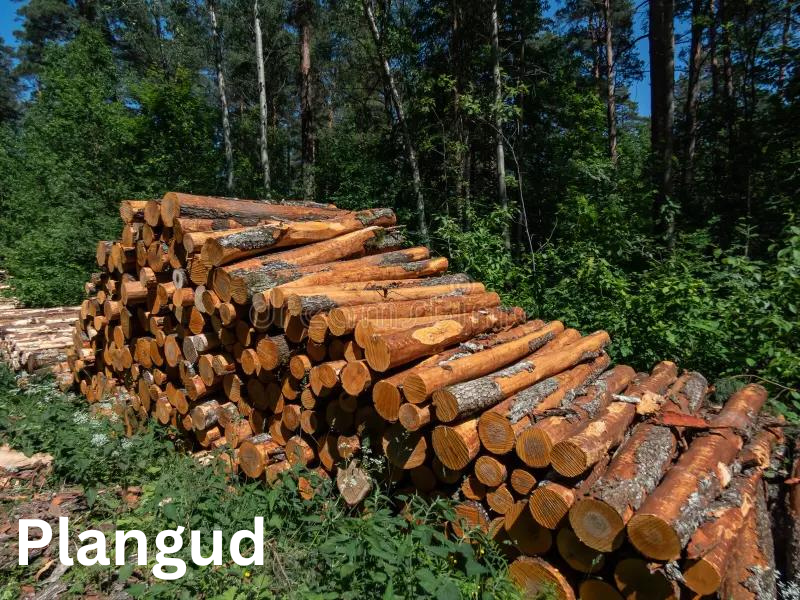Plangud, often overlooked in popular discourse, is a remarkable material with a plethora of uses in various industries. This article aims to explore the essence of plangud, delving into its characteristics, applications, and the different types that make it a versatile choice for craftsmen and manufacturers alike.
What Is Plangud?
It refers to a type of wood derived from the Plangud tree, native to tropical regions. Known for its robustness and durability, this wood is highly prized in construction, furniture making, and even in the crafting of musical instruments. Its dense grain not only makes it resistant to wear and tear but also gives it a distinct, appealing aesthetic.
Uses of Plangud Wood
The applications of plangud wood are extensive and varied. In construction, it is used for framing and as structural supports due to its strength and longevity. Furniture made from it stands out for its sturdiness and can last generations. Moreover, artisans value it for its acoustic properties, often using it to craft instruments that produce rich, resonant sounds.
Exploring the Different Types of Plangud
1. Tropical Plangud
Tropical Plangud is harvested from the dense, humid forests where it develops a thick, hard bark, ideal for outdoor uses. This type of plangud is especially resistant to moisture and decay, making it perfect for exterior constructions such as decking and fencing. The wood’s natural oils provide added protection against the elements, ensuring longevity even in harsh environmental conditions.
2. Mountain Plangud
Grown in the cooler, elevated areas, Mountain Plangud is known for its lighter color and fine grain. This variety is softer than its tropical counterpart, making it easier to work with. It is particularly favored in the furniture industry for its workability and aesthetic qualities. Mountain Plangud is also popular in interior design, used for paneling and flooring, where a lighter, more elegant wood is desirable.
3. Riverine Plangud
This type of plangud wood is sourced from trees growing along riverbanks. The constant exposure to water gives Riverine it a unique resilience to warping and swelling, making it ideal for boat building and other maritime applications. Its durability in wet conditions also makes it a top choice for constructing docks and piers.
4. Desert Plangud
Adapted to arid environments, Desert Plangud is incredibly tough with a high resistance to drying and cracking. The extreme conditions in which it grows lead to a denser wood grain, enhancing its strength. This type is often used in the creation of high-impact resistant items such as tool handles and heavy-duty furniture.
Exploring the Different Types of Plangud
1. Tropical Plangud
Tropical Plangud is harvested from the dense, humid forests where it develops a thick, hard bark, ideal for outdoor uses. This type of plangud is especially resistant to moisture and decay, making it perfect for exterior constructions such as decking and fencing. The wood’s natural oils provide added protection against the elements, ensuring longevity even in harsh environmental conditions.
Size and Characteristics
Tropical Plangud trees typically grow to impressive heights, often reaching up to 60-70 feet. They have a robust trunk diameter, sometimes extending beyond 2 feet, which provides a substantial yield of usable wood. The wood itself is characterized by its dense, dark grains and a naturally oily texture that helps in its preservation.
Quality
The quality of Tropical Plangud is exceptional due to its inherent resistance to rot and pests, thanks to the natural oils and dense cellular structure. It is highly valued for its durability and ability to withstand humid, tropical weather without warping or deteriorating.
Uses
Primarily, Tropical Plangud is used in outdoor construction projects, such as building exteriors, decking, and outdoor furniture. Its resistance to moisture and decay makes it ideal for these applications. Additionally, it is frequently used in shipbuilding and exterior architectural elements where longevity and resistance to the elements are crucial.
2. Mountain Plangud
Grown in the cooler, elevated areas, Mountain Plangud is known for its lighter color and fine grain. This variety is softer than its tropical counterpart, making it easier to work with. It is particularly favored in the furniture industry for its workability and aesthetic qualities. Mountain Plangud is also popular in interior design, used for paneling and flooring, where a lighter, more elegant wood is desirable.
Size and Characteristics
Mountain Plangud trees are generally shorter than their tropical counterparts, usually reaching up to 40-50 feet in height. They possess a lighter color and a finer grain, which makes them aesthetically appealing and easier to work with for detailed craftsmanship.
Quality
This variety of plangud is known for its aesthetic quality, featuring a smoother finish and a uniform texture. While it may not be as resistant to decay as Tropical Plangud, it still maintains a good level of durability and is less prone to warping compared to other softer woods.
Uses
Mountain Plangud is predominantly used in the furniture industry, especially for pieces requiring intricate designs and a fine finish, such as cabinets, dressers, and other indoor furnishings. It is also popular in interior design for features like wood paneling, moldings, and hardwood flooring, providing spaces with a warm and inviting feel.
3. Riverine Plangud
This type of plangud wood is sourced from trees growing along riverbanks. The constant exposure to water gives Riverine Plangud a unique resilience to warping and swelling, making it ideal for boat building and other maritime applications. Its durability in wet conditions also makes it a top choice for constructing docks and piers.
Size and Characteristics
Riverine Plangud trees grow along riverbanks and can vary widely in size, but they typically mirror the dimensions of tropical varieties, with some specimens reaching substantial heights and girth. This type of plangud has a less oily wood, adapted for constant exposure to water.
Quality
The standout quality of Riverine Plangud is its resistance to water-induced damage. It is less likely to warp or swell, which is a common problem with many other wood types when exposed to moisture continuously.
Uses
Given its resilience against water damage, Riverine Plangud is most often used in the construction of boats, docks, and waterfront structures. Its durability in wet conditions also makes it suitable for outdoor landscaping elements like bridges and waterside decking.
4. Desert Plangud
Adapted to arid environments, Desert Plangud is incredibly tough with a high resistance to drying and cracking. The extreme conditions in which it grows lead to a denser wood grain, enhancing its strength. This type is often used in the creation of high-impact resistant items such as tool handles and heavy-duty furniture.
Size and Characteristics
Desert Plangud trees are hardy, able to thrive in arid conditions, and generally smaller in size, often reaching up to 30-40 feet. The wood is extremely tough, with a dense grain that makes it highly resistant to drying and cracking.
Quality
The quality of Desert Plangud is defined by its toughness and the ability to withstand dry, harsh environments without losing strength or integrity. This makes it an excellent material for high-stress applications.
Uses
Desert Plangud is ideal for manufacturing tools and equipment that require durability and impact resistance, such as tool handles and heavy machinery parts. Additionally, its resistance to drying out makes it suitable for making durable furniture and decorative items that are exposed to the sun and heat.
Diverse Applications of Plangud Wood
Robust Foundations with Plangud
In the construction industry, this wood is especially valued for its robustness, making it a prime material for foundational elements such as beams, joists, and frames. Its inherent strength ensures that structures can withstand significant weight and stress, making buildings safer and more durable. This application extends to both residential and commercial construction, where longevity and structural integrity are paramount.
Plangud in Maritime Engineering
The use of Riverine Plangud in maritime engineering highlights its exceptional durability in moist and aquatic environments. This specific type of Plangud is utilized extensively in the construction of boats, docks, and waterfront structures. Its ability to resist water-induced degradation is a critical factor in its selection for these applications, ensuring that maritime constructions remain sturdy and serviceable over long periods despite constant exposure to harsh aquatic conditions.
Elegant Furnishings from Mountain Plangud
The aesthetic appeal of Mountain Plangud makes it a favorite in the furniture industry. Known for its light color and fine grain, this wood is ideal for crafting high-end furniture and intricate decorative pieces. The quality of Mountain it allows for a smooth finish, making it a top choice for items that require a refined appearance, such as dining tables, cabinets, and bedroom sets. Additionally, its ease of manipulation by tools allows craftsmen to achieve precise and detailed designs.
Advantages of Using Plangud
Longevity and Durability
One of the standout advantages of Plangud is its exceptional durability. Whether it’s resisting the humid conditions of the tropics or withstanding the rigors of maritime use, it provides a long-lasting solution that minimizes the need for replacements. This durability translates into cost savings over time and a reduction in material waste, making it a practical choice for various applications.
Sustainability and Eco-friendliness
Plangud trees grow relatively fast compared to other hardwood species, which contributes to their sustainability. Choosing it supports more sustainable forest management practices, as these trees can be harvested and replanted at a pace that maintains or even enhances the health of forest ecosystems. Furthermore, the durability of it reduces the demand for frequent wood replacement, aligning with eco-friendly building and manufacturing practices.
Aesthetic Flexibility and Appeal
The various types of this wood offer a range of colors and grain textures, providing considerable aesthetic flexibility. This versatility makes it suitable for a broad array of design preferences, from rustic and traditional to modern and minimalistic. Architects and interior designers value this flexibility, which allows them to cater to diverse client tastes and project requirements without compromising on quality.
Enhanced Safety and Resilience
It’s natural resistance to pests and decay significantly enhances the safety of structures and products made from this wood. This inherent resilience is particularly important in regions prone to termites and other wood-boring insects, as it prevents structural damage that could lead to potentially hazardous conditions. Moreover, certain types of it, such as Tropical and Riverine, possess additional properties that make them resistant to moisture and fungal growth, further safeguarding the longevity and integrity of the wood in challenging environments.
Cost-Effectiveness Over Time
Utilizing it can lead to significant financial benefits due to its long service life and minimal maintenance requirements. While the initial cost may be higher compared to less durable woods, the investment in it pays dividends in the form of lower long-term costs. This is because the need for frequent repairs, treatments, or replacements is greatly reduced. For businesses and homeowners alike, this makes it an economically sensible choice, offering a better return on investment compared to other materials that might require more upkeep or earlier replacement.
Conclusion
This exploration of it from its diverse applications to its numerous advantages reveals a material that is not only practical but also sustainable and aesthetically versatile. Plangud wood, with its different types tailored to various environmental and industrial needs, represents a valuable resource for multiple sectors. Its durability, resistance to various forms of degradation, and aesthetic appeal make it a top choice for those seeking quality and sustainability in their materials. Ultimately, understanding and utilizing it can lead to better, longer-lasting products and structures, aligning with goals of durability, sustainability, and beauty in construction and design.



